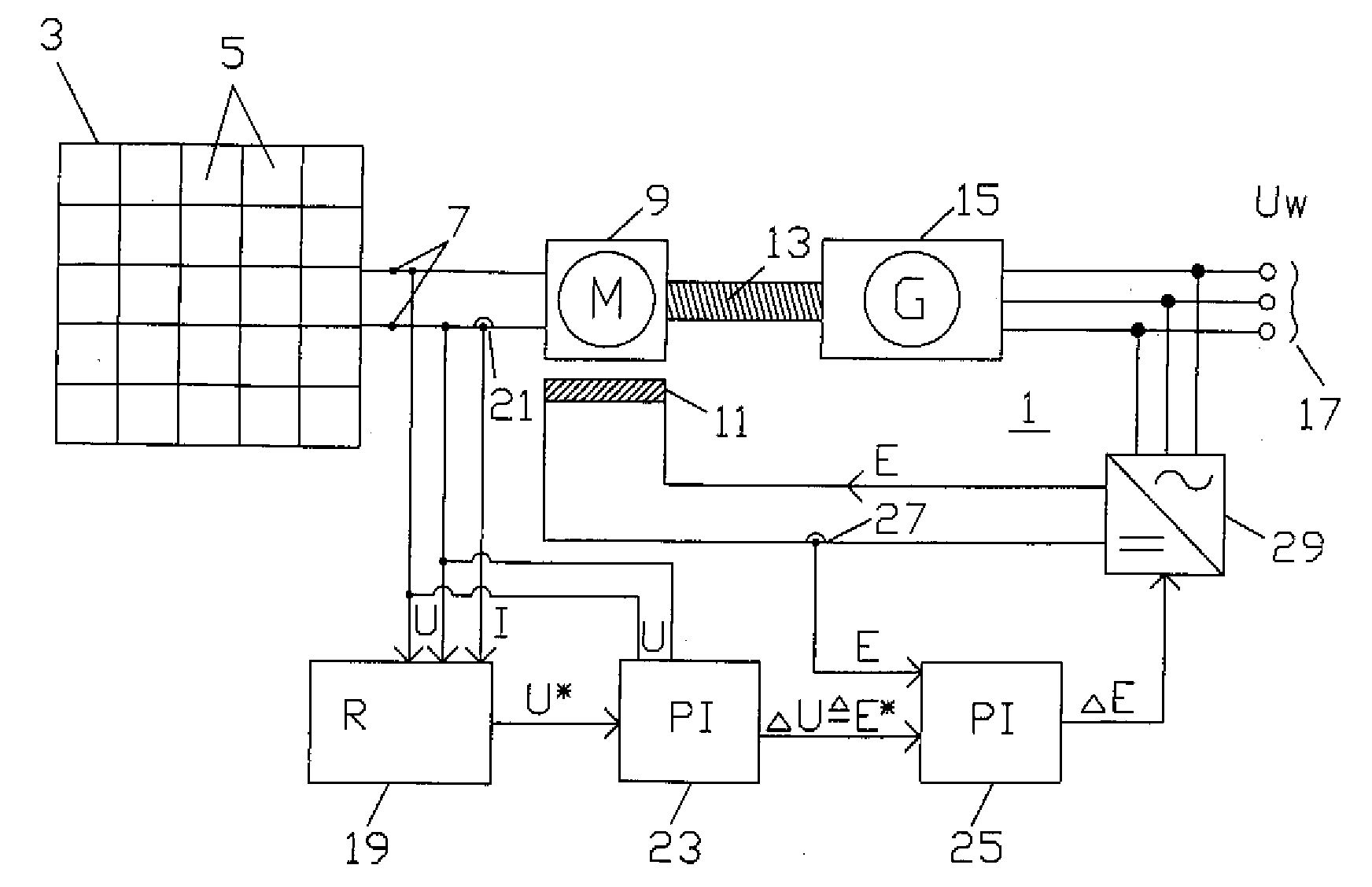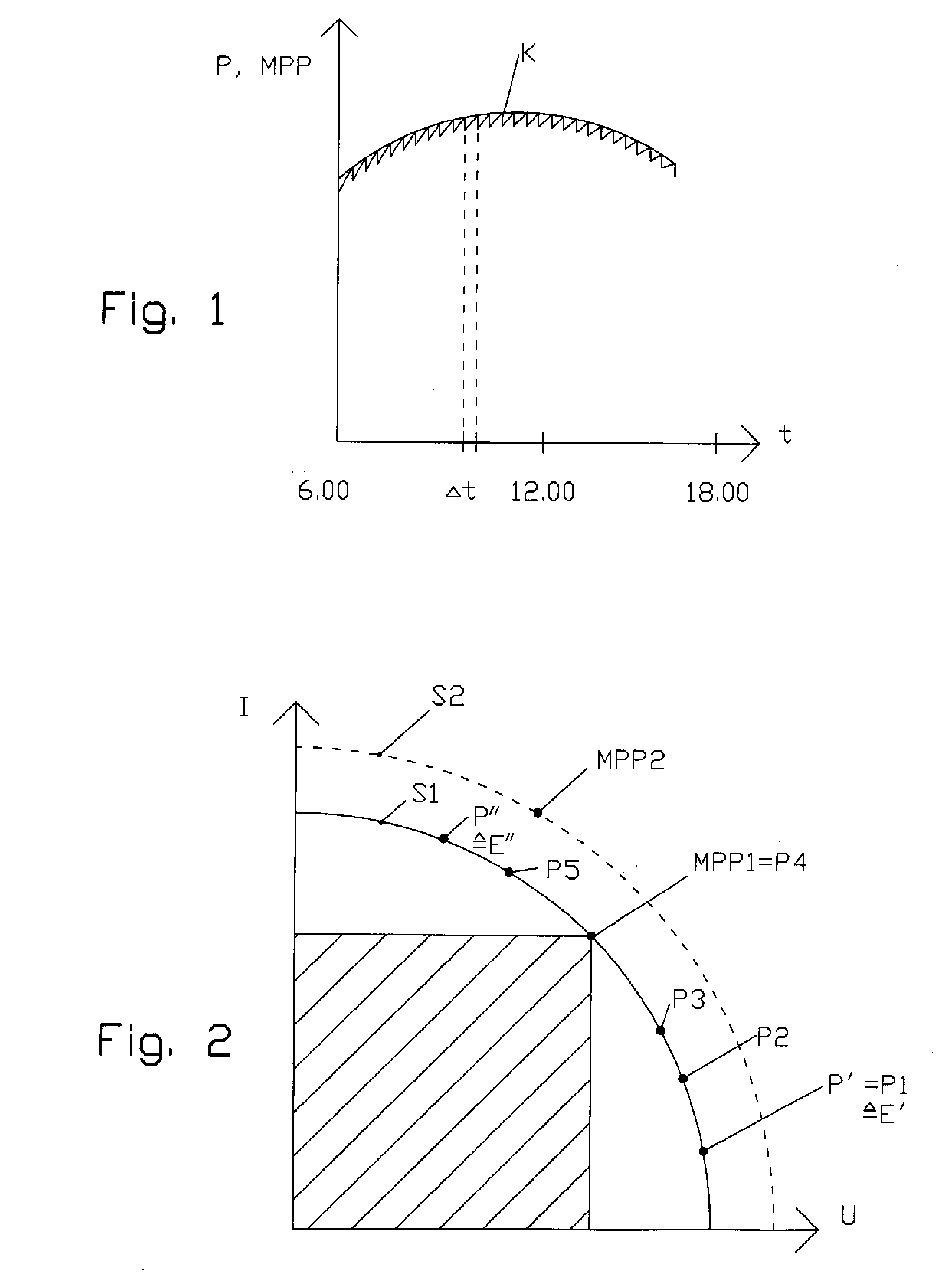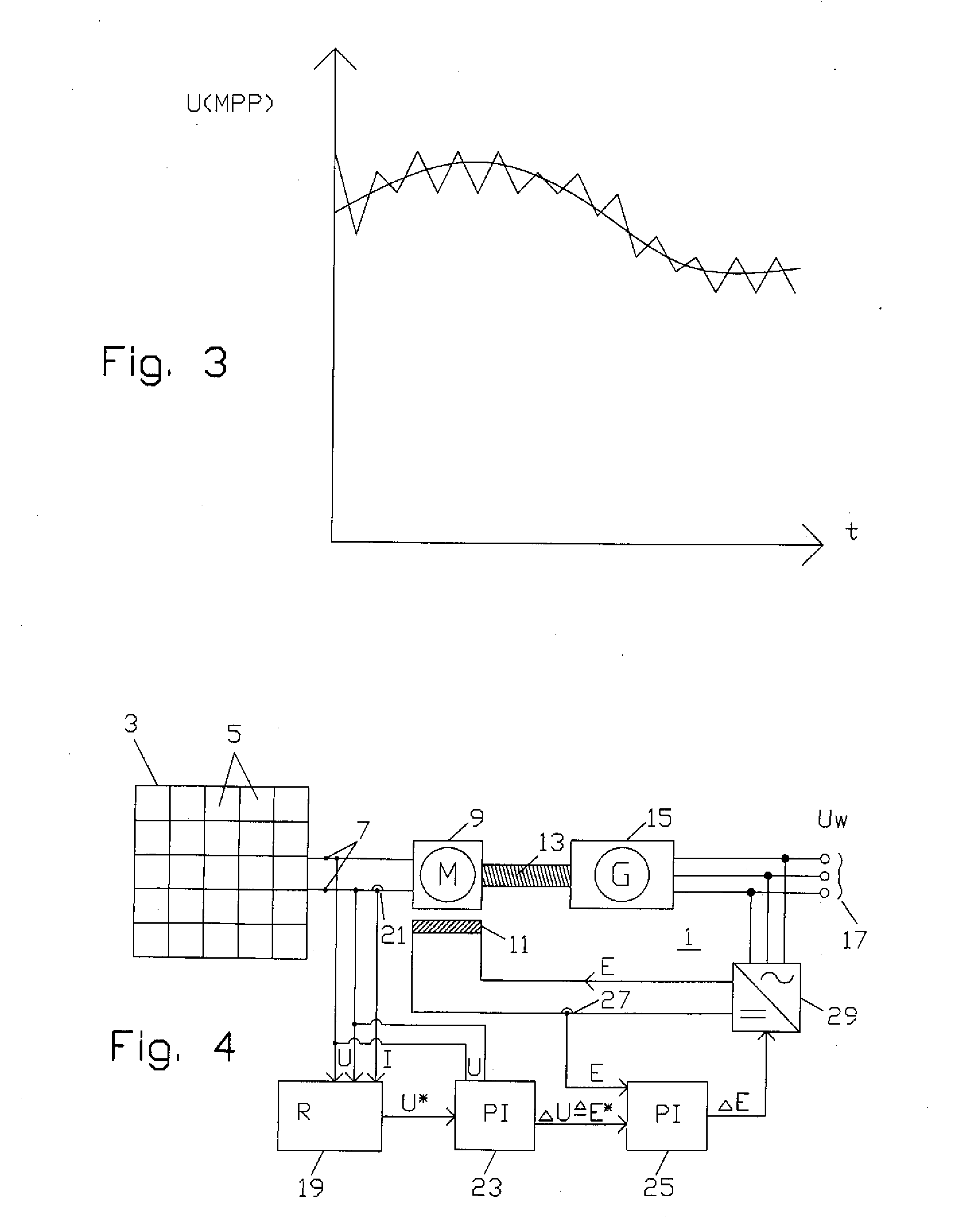Photovoltaic system and method for operating a photovoltaic system
a photovoltaic system and photovoltaic technology, applied in the field of photovoltaic systems, can solve the problems of high system cost and the tendency of capacitors in the system to produce a sluggish response to changes in operating conditions, and achieve the effects of reducing maintenance costs, increasing service life, and long service li
- Summary
- Abstract
- Description
- Claims
- Application Information
AI Technical Summary
Benefits of technology
Problems solved by technology
Method used
Image
Examples
Embodiment Construction
[0028]Throughout all the Figures, same or corresponding elements may generally be indicated by same reference numerals. These depicted embodiments are to be understood as illustrative of the invention and not as limiting in any way. It should also be understood that the figures are not necessarily to scale and that the embodiments are sometimes illustrated by graphic symbols, phantom lines, diagrammatic representations and fragmentary views. In certain instances, details which are not necessary for an understanding of the present invention or which render other details difficult to perceive may have been omitted.
[0029]Turning now to the drawing, and in particular to FIG. 1, there is depicted as a continuous curve K the peak power MPP (peak power point) that a photovoltaic system can supply over the course of one day, indicated by time t, between 6 a.m. and 6 p.m. It will be assumed that there are no clouds or no large temperature changes occur.
[0030]According to the proposed exempla...
PUM
 Login to View More
Login to View More Abstract
Description
Claims
Application Information
 Login to View More
Login to View More - R&D
- Intellectual Property
- Life Sciences
- Materials
- Tech Scout
- Unparalleled Data Quality
- Higher Quality Content
- 60% Fewer Hallucinations
Browse by: Latest US Patents, China's latest patents, Technical Efficacy Thesaurus, Application Domain, Technology Topic, Popular Technical Reports.
© 2025 PatSnap. All rights reserved.Legal|Privacy policy|Modern Slavery Act Transparency Statement|Sitemap|About US| Contact US: help@patsnap.com



